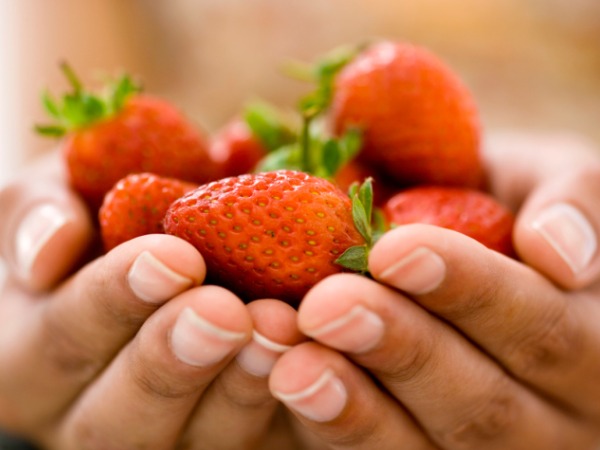New Study Concludes Fruit Helps Your Body Burn Stored Fat
HEALTH, 13 Jul 2015
Amanda Froelich, True Activist – TRANSCEND Media Service
2-4 fresh servings of fruit per day can help your body convert ‘bad’ fat into ‘good’ fat.
11 Jul 2015 – Who can resist summer’s sweet berries and ripe, juicy fruit? Few people, that’s for sure. Except those concerned about eating too much sugar from natural fruits, due to hype promoting the belief that fruit sugar converts to fat in the liver, causing obesity. Shame for those people, as a new study published in the International Journal of Obesity proves opposite! According to recent findings, a healthy amount (2-4 servings) of fresh fruit can help your body burn stored fat.
The study examines how a substance known as resveratrol, which is found in many fruits and is what allows an occasional glass of wine to be considered ‘healthy’, induces a “brown-like adipocyte formation in white fat through activation of AMP-activated protein kinase or a1.”
In other words, eating two or three servings of berries and grapes (as well as other fruits) every day can convert ‘bad’ fat stored in the body into ‘calorie-burning, good fat.’
Though the study used female mice to conduct its research, the results are quite impressive:
“Resveratrol significantly increased mRNA and/or protein expression of brown adipocyte markers, including uncoupling protein 1 (UCP1), PR domain-containing 16, cell death-inducing DFFA-like effector A, elongation of very long-chain fatty acids protein 3, peroxisome proliferator-activated receptor-γ coactivator 1α, cytochrome c and pyruvate dehydrogenase, in differentiated iWAT stromal vascular cells (SVCs), suggesting that resveratrol induced brown-like adipocyte formation in vitro.”
This isn’t the only known benefit of resveratrol. Another published piece of research in Genes & Nutrition looked at the effects of resveratrol on diabetics. They discovered the compound protects diabetics from heart disease by protecting the blood vessels commonly damaged by fluctuations in blood sugar levels.
And fruit isn’t the only food this fat-converting substance is found in. Peanut butter, pistachios, dark chocolate, red grapes, and blueberries all contain resveratrol. And contrary to common belief, one does not need to drink red wine to get resveratrol’s benefits – there’s plenty in ripe, juicy grapes!
Because plants make resveratrol to fight fungal infections, ultraviolet radiation, and stress, it’s no surprise, then, that it would be so beneficial to the human body as well.
_____________________________________
Share your thoughts in the comments section below. Join the Discussion!
This article is free and open source. You have permission to republish it under a Creative Commons license with attribution to the author and TrueActivist.com.
Go to Original – trueactivist.com
DISCLAIMER: The statements, views and opinions expressed in pieces republished here are solely those of the authors and do not necessarily represent those of TMS. In accordance with title 17 U.S.C. section 107, this material is distributed without profit to those who have expressed a prior interest in receiving the included information for research and educational purposes. TMS has no affiliation whatsoever with the originator of this article nor is TMS endorsed or sponsored by the originator. “GO TO ORIGINAL” links are provided as a convenience to our readers and allow for verification of authenticity. However, as originating pages are often updated by their originating host sites, the versions posted may not match the versions our readers view when clicking the “GO TO ORIGINAL” links. This site contains copyrighted material the use of which has not always been specifically authorized by the copyright owner. We are making such material available in our efforts to advance understanding of environmental, political, human rights, economic, democracy, scientific, and social justice issues, etc. We believe this constitutes a ‘fair use’ of any such copyrighted material as provided for in section 107 of the US Copyright Law. In accordance with Title 17 U.S.C. Section 107, the material on this site is distributed without profit to those who have expressed a prior interest in receiving the included information for research and educational purposes. For more information go to: http://www.law.cornell.edu/uscode/17/107.shtml. If you wish to use copyrighted material from this site for purposes of your own that go beyond ‘fair use’, you must obtain permission from the copyright owner.
